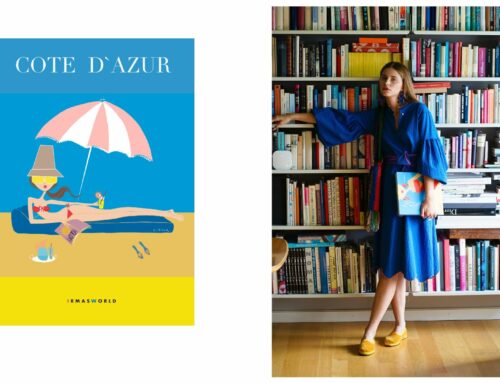Sustainable shopping on Black Friday and why eco-linen garments are the perfect idea for a gift this season
It’s black Friday and I am reminded of the long lines of cars on the highway near shopping malls in Connecticut where I used to live. I feel grateful we don’t have that in Europe, but still I am asking myself, as I see so many European brands following in the steps of an old American tradition, how is this kind of a day part of the Sustainable Fashion conversation we are having at the moment.
See, usually reduced prices make all of us subconsciously think that we are saving money, while we spend on things we don’t really need and even want. We consume more and we stuff our closets with more clothes we don’t wear. I am very much aware, of course, about the last two years and the pandemic, which re-inforces old shopping habits, as the only way of exercising our free will. Shopping is an escape, it is a celebration that gives us an immediate reward and makes us forget all the issues our world is dealing with, even for a moment.
I am ready to forgive myself and my friends when we repeat those old mistakes, but if I can just ask you for one thing – it would be to think of what you are buying, where is it coming from, what it was made of. Think of supporting small local brands, buying unique gifts and building timeless wardrobe with more eco- and transparently produced pieces.
In this post I want to point out to one very important part of sustainable gifting: check out the fabrics and the fibre that was used to make the product you are buying?
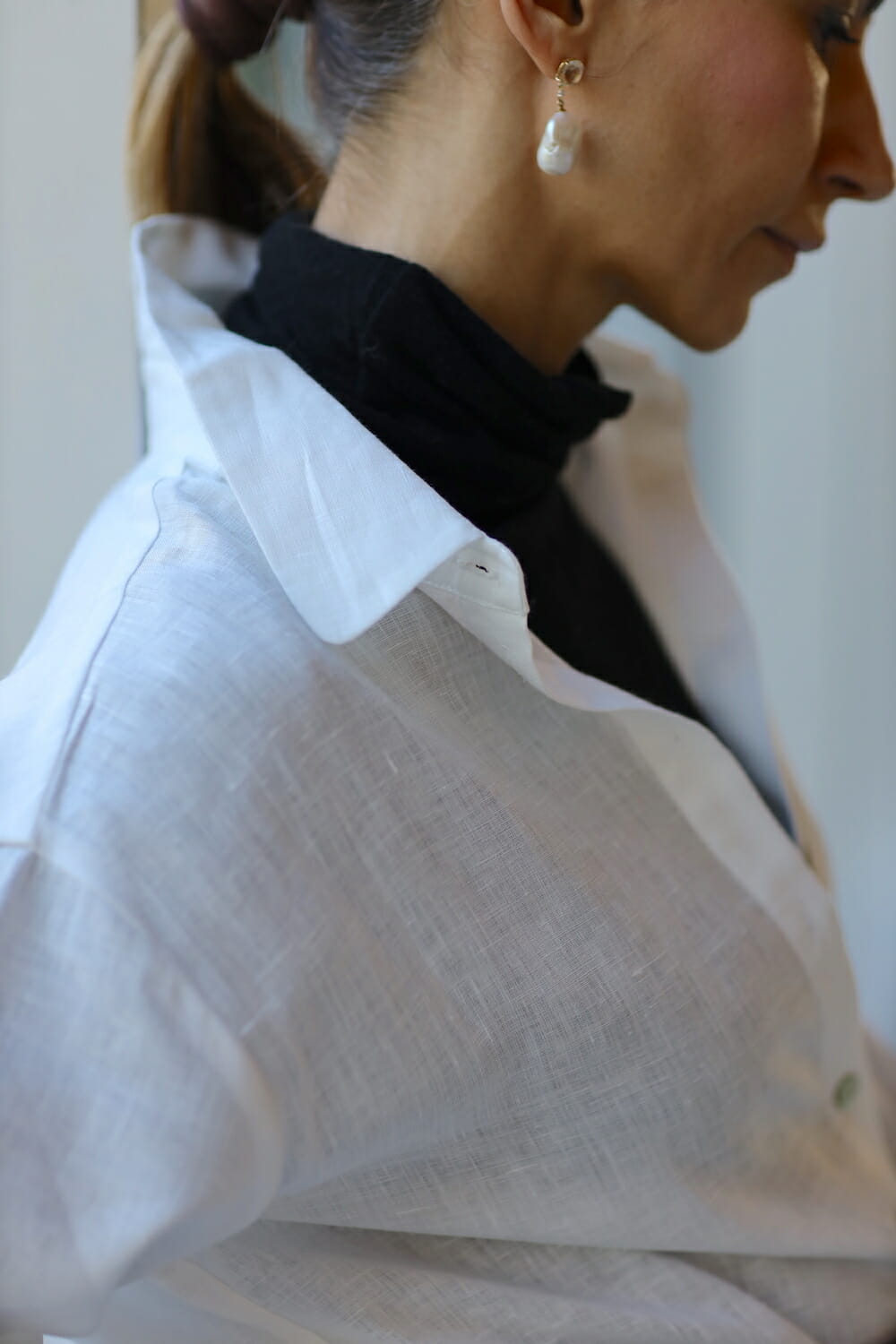
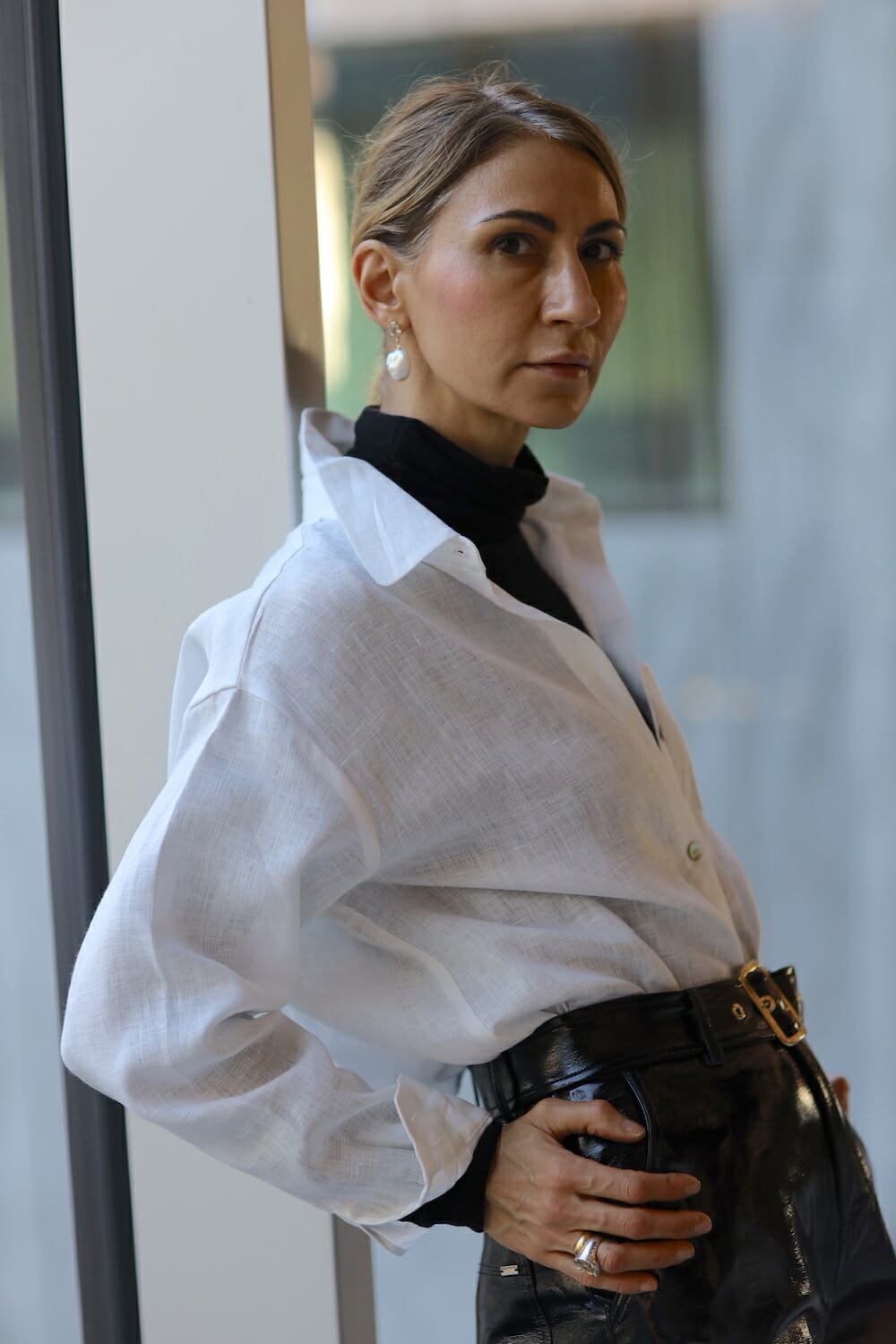
Natural vs synthetic fibres
The fabrics we wear all fit into two categories: natural or manmade. Natural fibres are derived from plants and animals, while synthetic fibres are made from chemical compounds. Animal-based fibres include silk and wool, while plant-based fibres include cotton, linen, jute and bamboo. Recently developed materials also include pinatex and tencel – made from eucalyptus pulp.
Needless to say, natural fibres are generally more environmentally friendly than synthetic ones, and are considered to be carbon neutral.
Natural materials require far fewer chemical additions during the production process. Due to the structure of cellulose, which makes up natural materials, most plant-based natural fibres are incredibly strong. There are many other benefits to natural fibers, and what’s most important is that they come from a renewable source with few negative impacts on global biodiversity.
Unfortunately though, despite being a natural resource, cotton isn’t a very sustainable material. Massive amounts of water is needed to effectively farm and produce cotton. It takes 2,700 litres of water to make just one regular cotton T-shirt – staggering isn’t it! However, organic, fairly traded cotton production is a step in the right direction, but unfortunately organic cotton still only makes up around 1% of global cotton.
Ecco Linen
The benefits of linen are many. Similar to hemp, linen is derived from a very versatile crop: the flax plant. Linen requires minimal water and pesticides, and even grows in poor-quality soil. Plus, every part of the plant is used, so nothing is wasted. Linen is strong, naturally moth resistant, and, when untreated (i.e. not dyed), fully biodegradable. In addition to being good for the planet, it’s also light and can withstand high temperatures, absorbing moisture without holding bacteria.
Another big plus is that as a naturally sustainable and biodegradable fabric, it has the advantage of avoiding using the plastics that go hand-in-hand with the fossil fuel industry.
Not every natural fabric has made the list though. With bamboo, wool and leather all bringing their own complex issues, this makes linen one of the best sustainable choices you can make for your wardrobe.
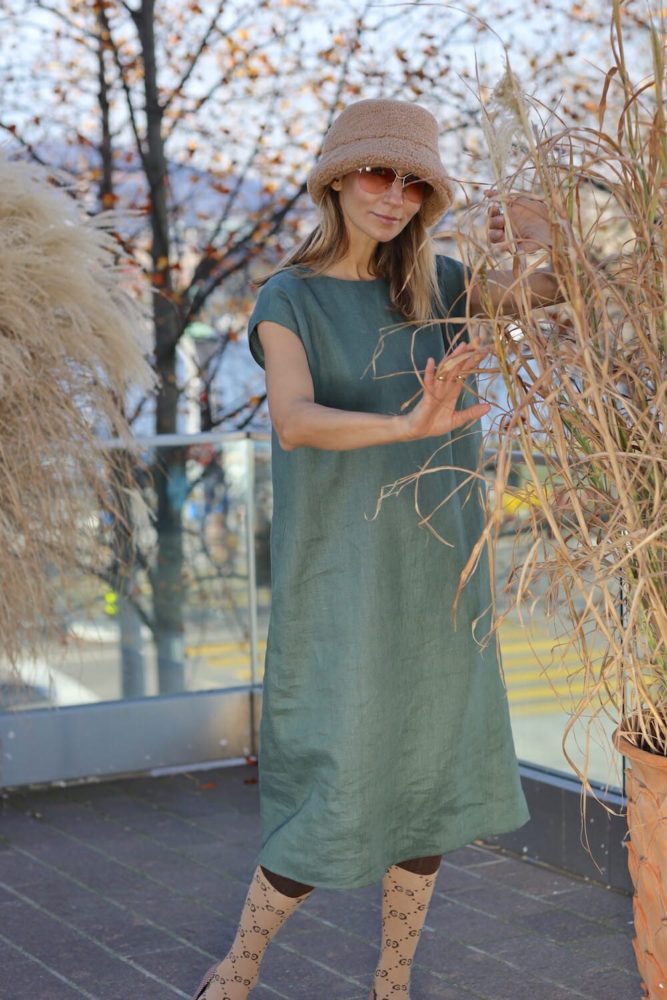

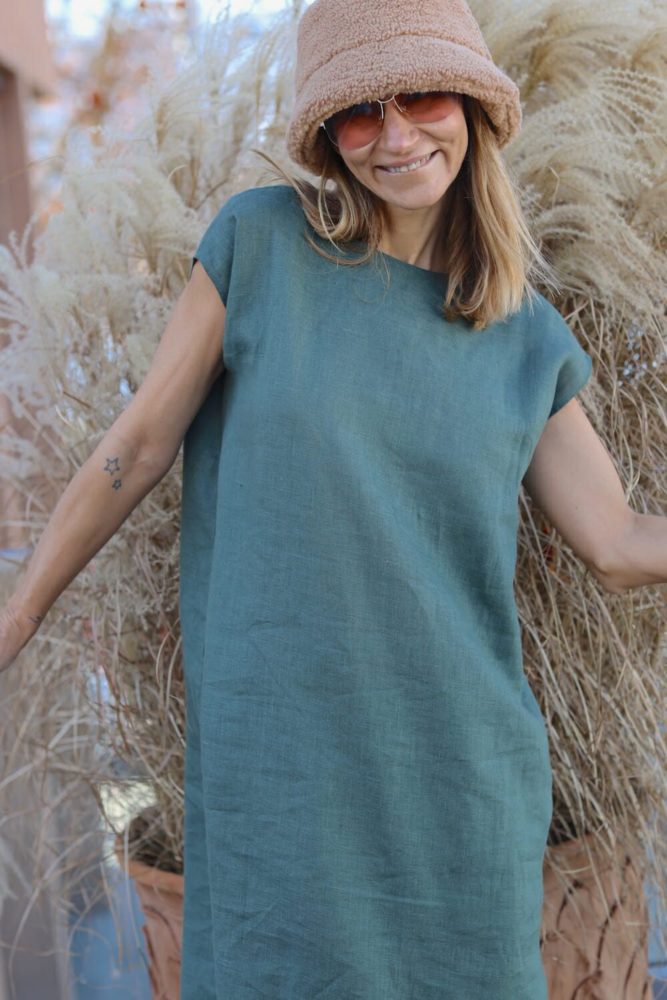
Of Grapes and Waves
While I was looking for the best quality eco linen, with centuries of tradition in the growing of the flaxseed and the production of beautifully designed garments and home-wear, I came across a small company called Of Grapes and Waves.
The founder, Natalia Eltsova, is from Russia, but she sources the eco linen from Belarus, a country known for the best quality linen in the world. The climate and soil of Belarus seem to have fathered linen naturally for centuries. Linen was the basis of local peoples’ culture and their primary occupation. Belarusians have had a close relationship with flax spinning since ancient times: men sowed the seeds in the fields and women harvested. And of course, in every household linen homeware was used – linen towels, duvet covers, pillowcases, bed sheets. And linseed oil is the basis of the country’s national cuisine.
Flax spinning has a long history of development too. While some processes are now mechanised, the traditions still have a strong influence. For example, traditionally the cut flax stalks would be left in the field in the open air for a month, or even two! Morning dew, rain, snow and wind would naturally soften the shell of the stems. The fiber then became suitable for spinning.
This method was used by Belarusian ancestors ten centuries ago – and they still do it this way to this day. “Nobody knows flax better than nature itself”, is what they like to say. They also believe that this material potentially has the strongest energy of all other materials.
Waking up in eco linen sheets with its unbelievable deep nature smell, brings relaxation and thoughtfulness. Linen pillowcases bring the harmonious essence of calmness to the interior of every house. Sheets from this material are highly hygienic and contribute to more intensive blood circulation and skin moisturizing.
So imagine my fascination with the ‘Of Grapes and Waves’ eco linen collection, which has been designed with respect to unique female beauty, no matter what age or size. Most designs are minimal and easy to wear, no complicated lines or intricate decorations. The colours are inspired by nature, like sky blue, olive green, red grape, natural sand beige, and corn-flower blue.
Find out more about the brand on my fellow blogger’s website ‘Finding Fashion Jules’.
In the meantime I’ll share with you a few tips on how to style your favourite linen items no matter the season we are in.

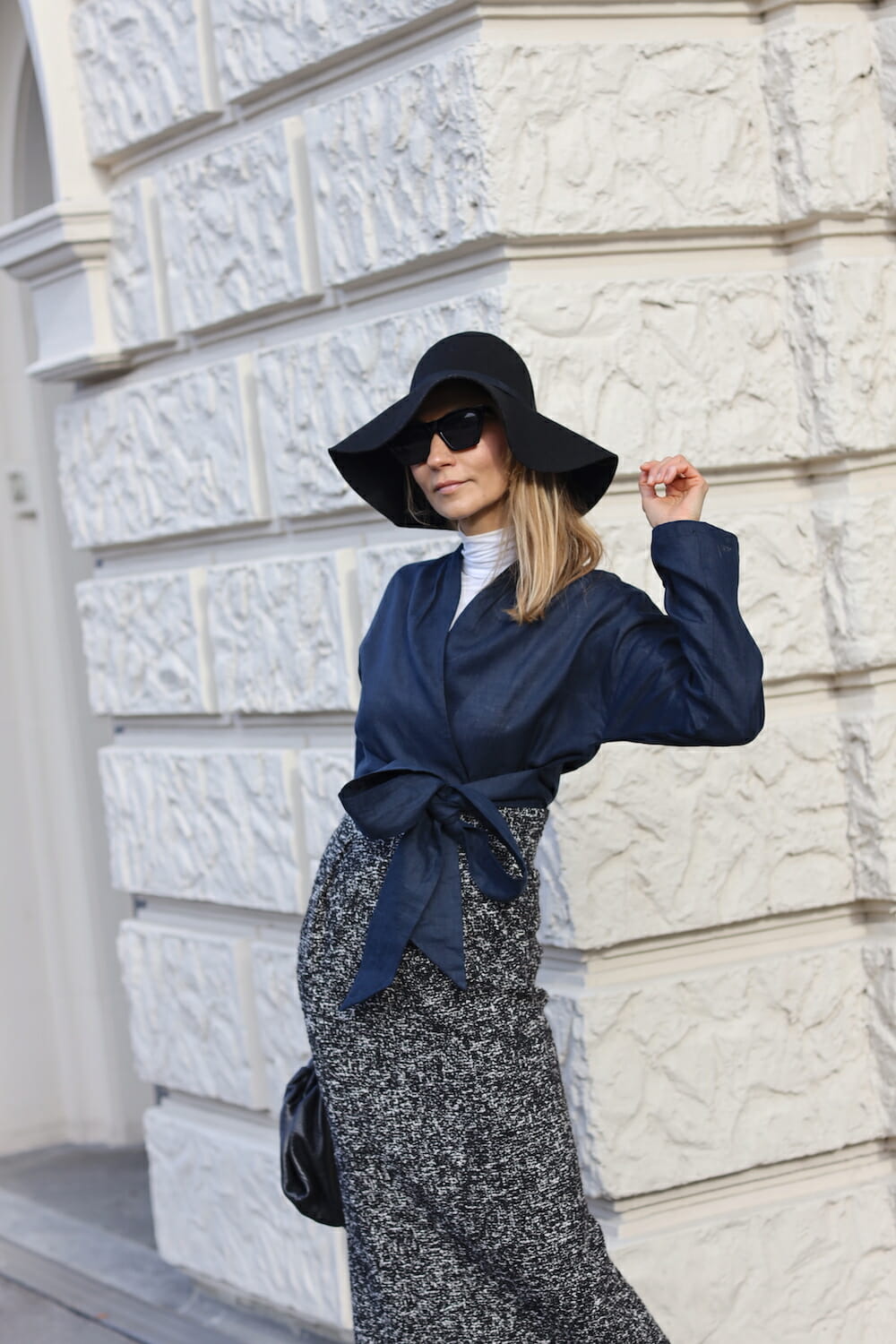
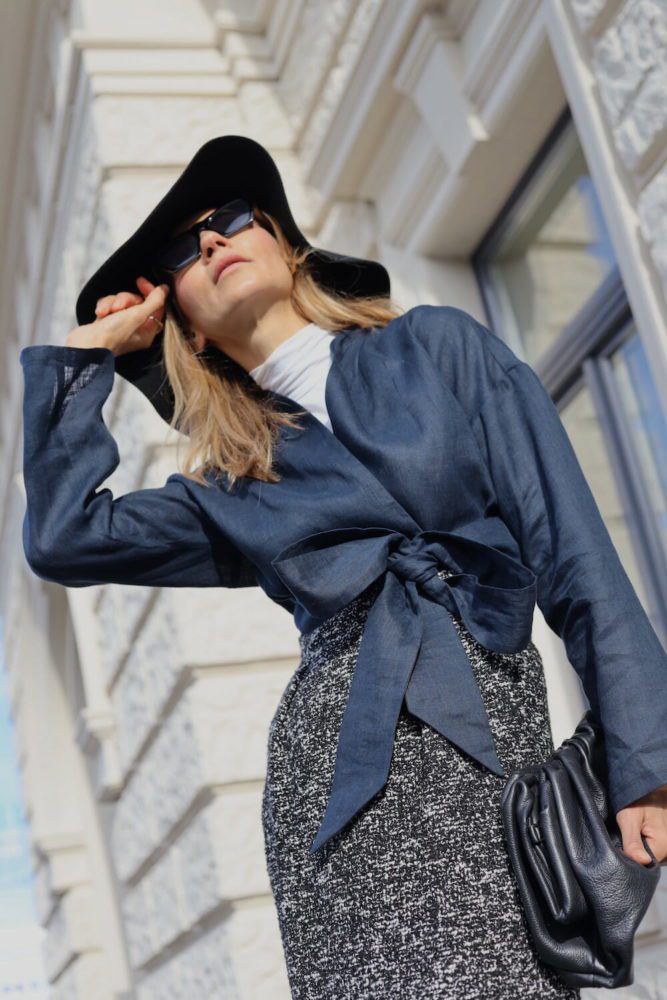
Never-Dies Eco Linen
Linen shirts, white, black, blue, are some of those classics every woman has to have in her wardrobe. And you may be thinking I’ve gone nuts to talk about linen in winter, but well, thinking of the sea, the ocean and my trip to the Maldives coming January, I’d like to restock on cool linen shirts right around Christmas. It’s the perfect gift I can think of. Plus I have couple of ideas how to style linen even in winter.
My go-to styling is wearing linen with leather pants (or jeans) and a turtle neck underneath. For some reason I find the match between black turtleneck and a white linen shirt quite cool. I also love the black linen set from Of Grapes and Waves, the wrap up shirt and the pants are a totally chic approach to summer suiting.
Last word about linen dresses: speaking of minimalism, elegant and timeless sustainable clothing, you have it all in one easy, feminine piece with a natural feel. Just find your shape and colour and you are all set.
Check out Of Grapes and Waves collection of eco linen here.
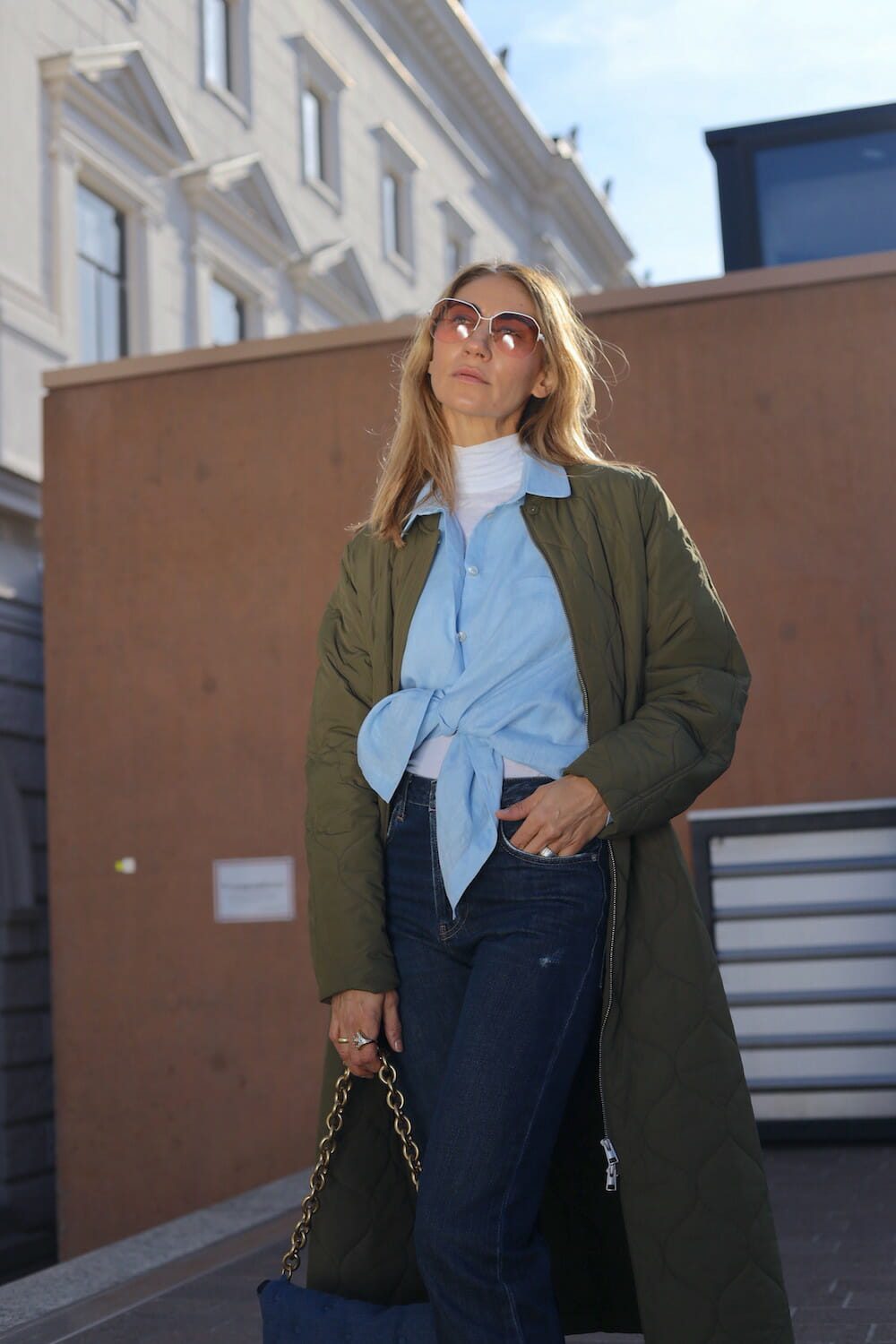
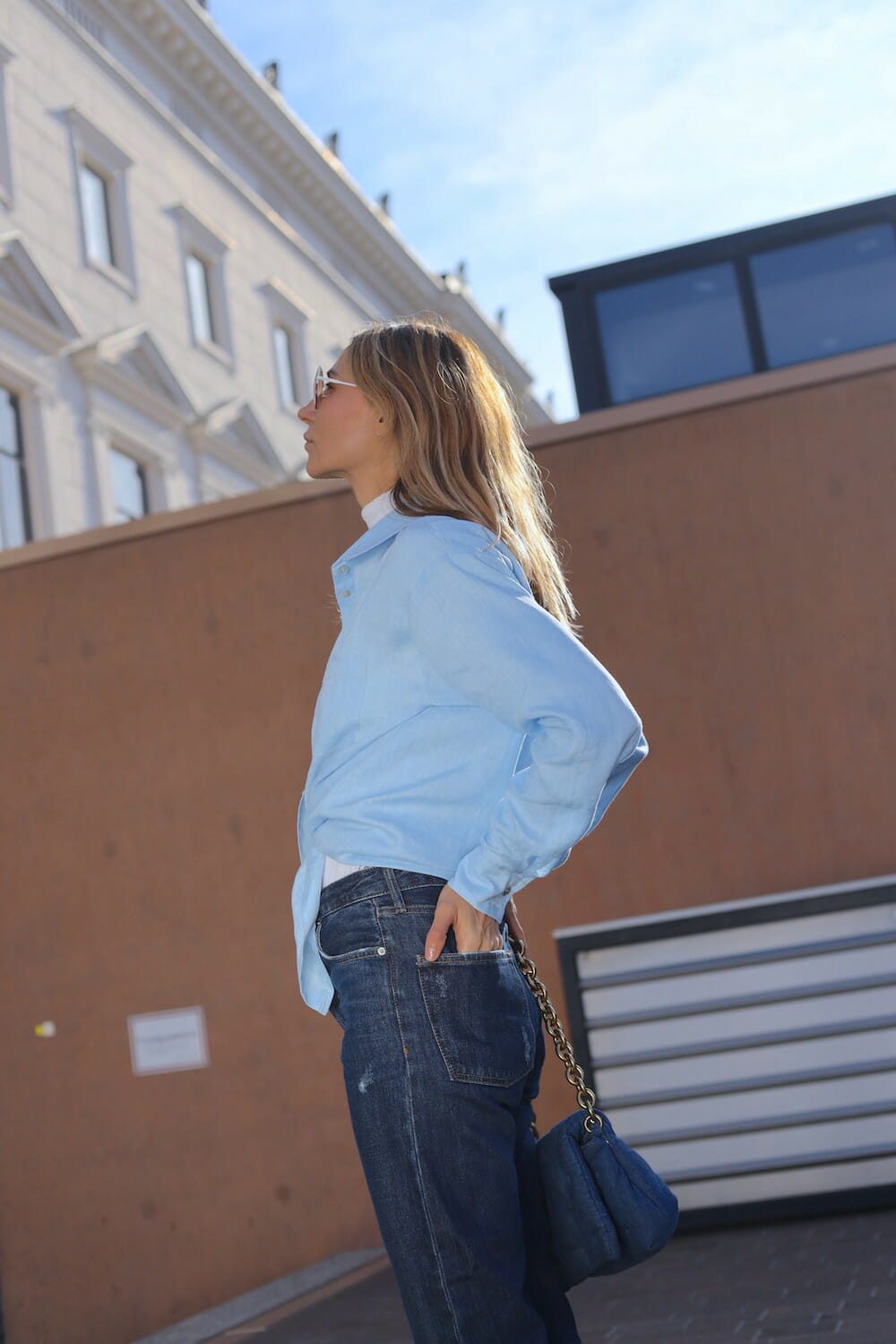
Sign to receive the complete experience
with unpublished content & community deals

